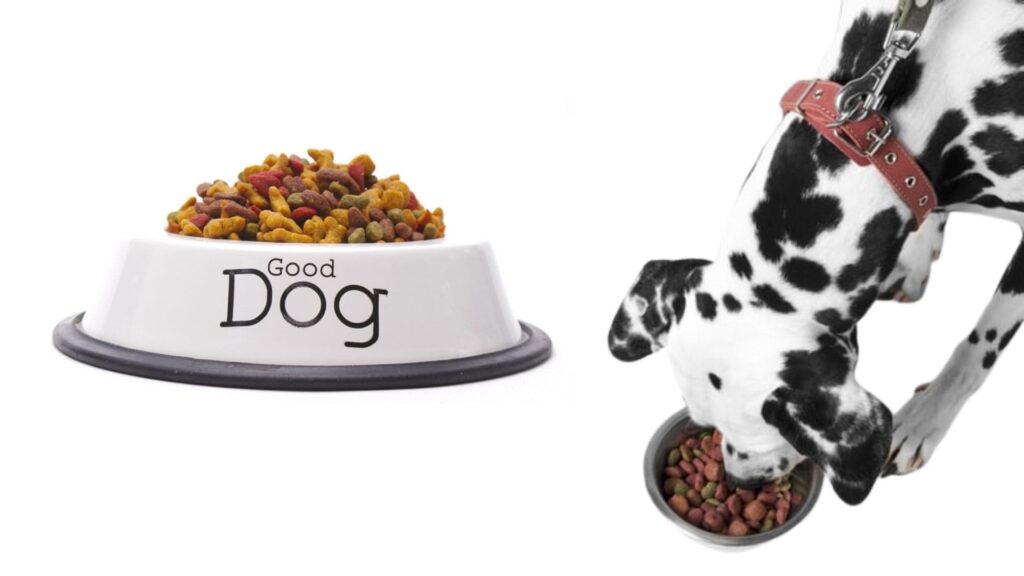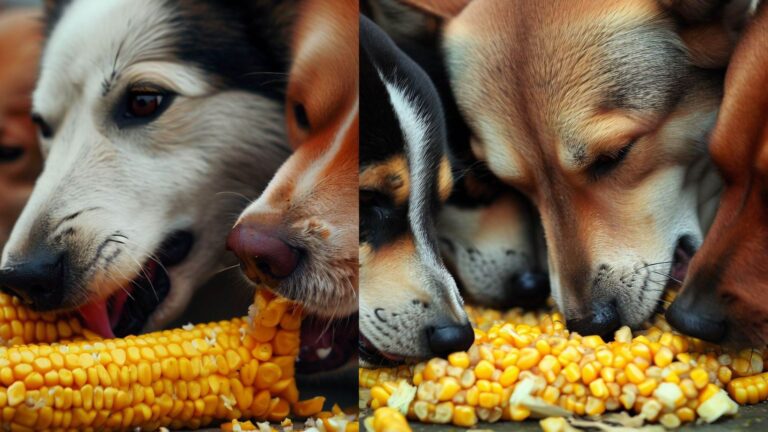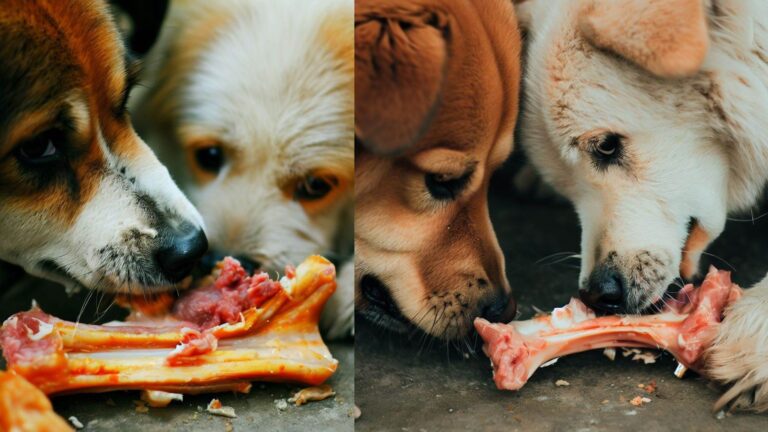Dogs are wonderful companions that bring joy and happiness to their owners. Just like humans, dogs require a balanced diet to maintain their health and wellbeing. While some owners choose to make their dog’s food from scratch, others opt for commercial dog food. In this blog, we’ll discuss everything you need to know about commercial dog food, including its types, ingredients, benefits, and drawbacks.
Table of Contents
Types of Commercial Dog Food
There are several types of commercial dog food available in the market, each with its unique benefits and drawbacks. Here are some of the most popular types:

- Dry Dog Food: Also known as kibble, dry dog food is the most common type of commercial dog food. It’s affordable, convenient, and has a longer shelf life than other types of dog food. However, some dry dog foods may contain a high amount of carbohydrates and preservatives, which may be better for some dogs.
- Wet Dog Food: Wet dog food is usually sold in cans or pouches and contains a higher moisture content than dry dog food. It’s a good option for dogs that don’t drink enough water or have dental issues. However, it’s more expensive than dry dog food and has a shorter shelf life once opened.
- Semi-Moist Dog Food: Semi-moist dog food is a hybrid between dry and wet dog food. It has a high moisture content and is easier to chew than dry dog food. However, it may contain artificial preservatives, colorings, and flavorings, which may not be suitable for all dogs.
- Prescription Dog Food: Prescription dog food is specially formulated for dogs with specific health issues such as obesity, diabetes, or allergies. It’s only available through a veterinarian and may be more expensive than other types of dog food.
Ingredients in Commercial Dog Food
The ingredients in commercial dog food can vary widely depending on the brand, type, and quality. However, most commercial dog foods contain some combination of the following ingredients:
- Meat: Dogs are carnivores and require a diet that’s high in animal protein. Most commercial dog foods contain chicken, beef, lamb, or fish meat.
- Grains: Grains such as corn, wheat, and rice are often used as a source of carbohydrates in commercial dog food. However, some dogs may have difficulty digesting grains and may be allergic to them.
- Vegetables and Fruits: Vegetables and fruits such as carrots, peas, and apples may be added to commercial dog food to provide vitamins and minerals.
- Additives and Preservatives: Additives and preservatives are added to commercial dog food to improve its texture, taste, and shelf life. However, some additives and preservatives may be harmful to dogs and should be avoided.
Benefits of Commercial Dog Food
- Convenience: Commercial dog food is convenient to purchase and store. It’s readily available in most supermarkets and pet stores and has a longer shelf life than homemade dog food.
- Balanced Nutrition: Commercial dog food is formulated to provide balanced nutrition that meets the nutritional requirements of dogs.
- Variety: Commercial dog food comes in a wide variety of flavors, textures, and types, making it easy to find food that your dog enjoys.
Drawbacks of Commercial Dog Food
Quality: Not all commercial dog foods are created equal. Some may contain low-quality ingredients or fillers that don’t provide adequate nutrition.
Cost: High-quality commercial dog food can be expensive, especially for larger dogs or those with specific dietary requirements.
Processing: Commercial dog food is processed at high temperatures, which can destroy some of the nutrients in the food.
Commercial Dog Food Diet Plan
Here is a sample commercial dog food diet plan and chart that you can use as a reference for feeding your furry friend:
- Choose a high-quality commercial dog food brand that meets AAFCO standards and contains meat as the primary ingredient. Some examples of high-quality brands include Royal Canin, Hill’s Science Diet, and Purina Pro Plan.
- Determine your dog’s daily calorie requirements based on their weight, age, and activity level. This can be done with the help of a veterinarian or through online calculators.
- Divide your dog’s daily calorie requirement by how many meals you plan to feed them daily. For example, if your dog requires 1000 calories per day and you plan to feed them twice a day, each meal should provide approximately 500 calories.
- Use the feeding guide on the commercial dog food bag as a starting point and adjust the amount based on your dog’s individual needs. You may need to adjust the amount of food you feed your dog based on their weight, activity level, and overall health.
Feed your dog simultaneously each day, and provide access to fresh, clean water at all times.
Commercial Dog Food Diet Chart
Here is a sample commercial dog food diet chart for a 50-pound adult dog with a moderate activity level:
- Breakfast: 2 cups of dry dog food (500 calories)
- Mid-Morning Snack: Small treat or piece of fruit
- Lunch: 1.5 cups of wet dog food (400 calories)
- Mid-Afternoon Snack: Small treat or raw carrot stick
- Dinner: 2 cups of dry dog food (500 calories)
- Evening Snack: Small treat or piece of cooked chicken breast
Note: This is just an example; you should adjust the amount and type of food based on your dog’s needs.
Read More: Can Dogs Eat Hummus? What You Need to Know
FAQs
What is commercial dog food?
Commercial dog food is a type of dog food that is mass-produced and sold commercially in grocery stores and pet supply stores. These dog foods are formulated to provide dogs with a complete and balanced diet and are available in both wet and dry forms.
Is commercial dog food safe for my dog?
Yes, commercial dog food is generally safe for dogs. However, choosing a high-quality brand with ingredients that meet your dog’s specific nutritional needs is essential. You should also be mindful of the potential drawbacks of commercial dog food, such as cost, quality, and processing.
What are the benefits of feeding my dog a commercial dog food diet?
A commercial dog food diet can be a convenient and beneficial option. Commercial dog food is formulated to provide dogs with balanced nutrition, and the ingredients are carefully selected to meet their nutritional needs. Additionally, commercial dog food is easy to store and serve.
How do I choose a high-quality commercial dog food brand?
When choosing a commercial dog food brand, look for one that meets the standards set by the Association of American Feed Control Officials (AAFCO). Additionally, choose a brand with meat as the primary ingredient and avoid those that contain artificial preservatives, fillers, and by-products.
What should I look for on the label of commercial dog food?
On the label of commercial dog food, look for the AAFCO statement, which indicates that the food meets the nutritional requirements for dogs. Additionally, look for the ingredients list, which should list whole meats as the primary ingredient and avoid those with fillers and by-products.
How much commercial dog food should I feed my dog?
The amount of commercial dog food you should feed your dog will depend on their age, size, breed, and activity level. You can determine your dog’s daily calorie requirements with the help of a veterinarian or online calculators and adjust the amount of food you feed accordingly.
Can I mix different brands or types of commercial dog food?
Yes, you can mix different brands or types of commercial dog food. However, it’s essential to ensure that you’re providing your dog with a balanced and complete diet that meets their nutritional needs.
Should I feed my dog wet or dry commercial dog food?
Whether you feed your dog wet or dry commercial dog food is a matter of personal preference. Both types of food can provide dogs with balanced nutrition, but wet food can be more palatable for picky eaters, while dry food is more convenient to store and serve.
Can I give my dog human food as part of their commercial dog food diet?
Yes, you can give your dog human food as part of their commercial dog food diet, but it’s essential to do so in moderation and ensure that the food is safe for dogs. Some human foods, such as chocolate and onions, can be toxic to dogs.
What are some common ingredients in commercial dog food, and are they safe for my dog?
Some common ingredients in commercial dog food include whole meats, grains, vegetables, and fruits. These ingredients are generally safe for dogs, but you should be mindful of your dog’s food allergies or sensitivities. Also, avoid commercial dog foods containing artificial preservatives, fillers, and by-products.
Conclusion
In conclusion, commercial dog food can be a convenient and beneficial option for pet owners to provide their dogs with balanced nutrition. However, choosing a high-quality brand with ingredients that meet your dog’s nutritional needs is essential.
Pet owners should also consider the potential drawbacks of commercial dog food, such as cost, quality, and processing. By making an informed decision, pet owners can ensure that their furry companions are healthy, happy, and well-fed.






